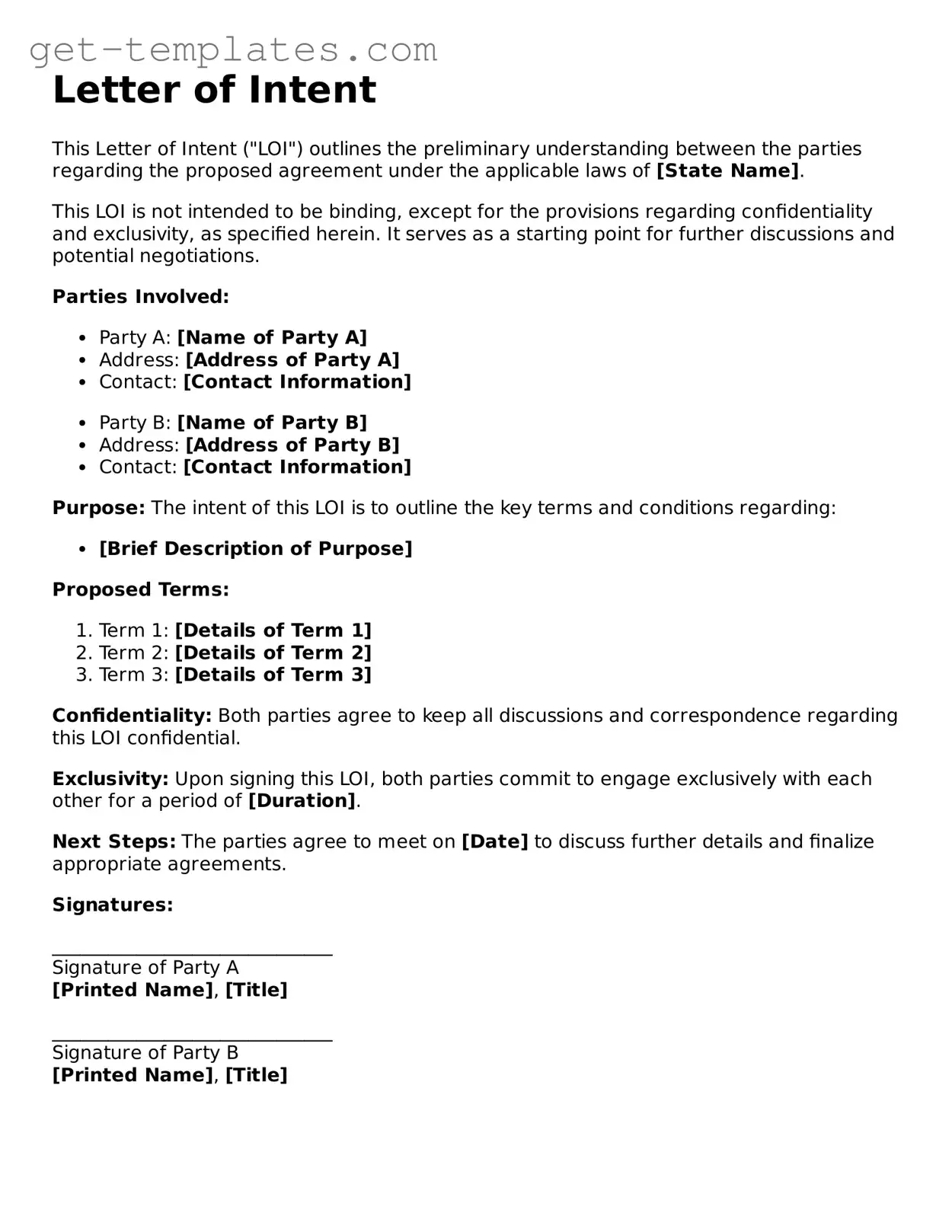What is a Letter of Intent (LOI)?
A Letter of Intent is a document that outlines the preliminary understanding between two or more parties before entering into a formal agreement. It serves as a way to express interest in a potential deal or partnership, detailing the basic terms and conditions that will be discussed further. While it is not legally binding, it sets the stage for negotiations and can help clarify the intentions of all parties involved.
When should I use a Letter of Intent?
You should consider using a Letter of Intent when you are in the early stages of negotiations and want to ensure that all parties are on the same page. Common scenarios include:
-
Business acquisitions
-
Joint ventures
-
Real estate transactions
-
Partnership agreements
Using an LOI can help prevent misunderstandings and provide a framework for the discussions that will follow.
Is a Letter of Intent legally binding?
Generally, a Letter of Intent is not legally binding, meaning that it does not create enforceable obligations. However, certain provisions within the LOI, such as confidentiality or exclusivity clauses, may be binding. It is crucial to clearly indicate which parts of the LOI are intended to be binding and which are not to avoid confusion.
What should be included in a Letter of Intent?
A well-crafted Letter of Intent typically includes the following elements:
-
The names of the parties involved
-
A description of the proposed transaction or relationship
-
Key terms and conditions, such as price or timelines
-
Confidentiality agreements, if applicable
-
Any exclusivity arrangements
-
Next steps or a timeline for finalizing the agreement
Including these elements can help provide clarity and direction for future discussions.
How does a Letter of Intent differ from a contract?
A Letter of Intent is a preliminary document that outlines intentions and proposed terms, while a contract is a formal agreement that creates legally binding obligations. In essence, an LOI is a step toward a contract, serving as a framework for negotiations. Once both parties agree on the terms, a formal contract can be drafted and signed.
Can a Letter of Intent be modified after it is signed?
Yes, a Letter of Intent can be modified after it is signed, but both parties must agree to the changes. It is advisable to document any modifications in writing to ensure that all parties are aware of the updates. This helps maintain clarity and prevents misunderstandings moving forward.
How long does a Letter of Intent last?
The duration of a Letter of Intent can vary depending on the specific agreement between the parties. Typically, an LOI will include a timeframe for negotiations, which could range from a few weeks to several months. If the parties are unable to reach a final agreement within the specified time, the LOI may expire unless both parties agree to extend it.
What should I do if I receive a Letter of Intent?
If you receive a Letter of Intent, it is important to review it carefully. Consider the terms and conditions outlined in the document and assess whether they align with your goals. Consulting with a legal professional can provide valuable insights and help you understand the implications of the LOI. After your review, you can either accept, negotiate, or decline the terms presented.
